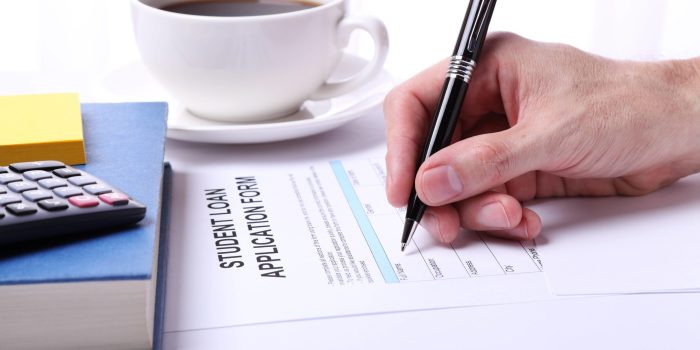
Navigating the complexities of student loan debt can feel overwhelming, especially when your loans have fallen into default. Defaulting on student loans triggers serious consequences, impacting your credit score, financial stability, and even your future employment prospects. This guide provides a clear, step-by-step path to understanding your options and regaining control of your financial future, offering practical solutions to navigate the process of getting your student loans out of default.
From exploring rehabilitation programs and consolidation options to understanding income-driven repayment plans and the crucial role of communication with your loan servicer, we’ll equip you with the knowledge and strategies to effectively address your defaulted student loans. We’ll also delve into potential debt relief programs and the benefits of seeking professional guidance to create a sustainable long-term repayment plan.
Understanding Student Loan Default

Falling behind on your student loan payments can lead to serious consequences. Understanding the process of default and its implications is crucial for preventing it and navigating the situation if it occurs. This section will explain the steps involved in default, the repercussions, and how to verify your loan status.
Student loan default occurs when you fail to make your scheduled payments for a specific period, typically 270 days or nine months, depending on your loan type. This triggers a series of actions by your loan servicer and ultimately impacts your credit and financial well-being. The process often begins with missed payments, followed by increasingly serious warnings and eventually, default status.
Student Loan Default Process
The process of default generally involves several stages. First, you will receive notices from your loan servicer regarding missed payments. These notices will usually escalate in severity, providing opportunities to resolve the situation before default. If you continue to miss payments, your loan will be referred to collections. At this point, your credit score will be negatively affected, and collection agencies may begin contacting you to demand payment. Finally, after a certain period of non-payment (as mentioned above), your loan will be officially declared in default.
Consequences of Student Loan Default
The consequences of student loan default are significant and far-reaching. Your credit score will be severely damaged, making it difficult to obtain loans, credit cards, or even rent an apartment. Wage garnishment is a possibility, where a portion of your earnings is directly seized by the government to repay the debt. Tax refunds can also be withheld. Furthermore, default can affect your ability to obtain federal financial aid in the future, preventing you from pursuing further education. In some cases, it can even lead to legal action.
Determining if Your Loans Are in Default
Determining your loan status is straightforward. First, gather your loan information, including your loan servicer’s contact information and your loan identification numbers. Next, contact your loan servicer directly. They can provide a definitive answer about your loan status. You can also access your loan information through the National Student Loan Data System (NSLDS) website, a central database for federal student loans. Regularly checking your credit report can also reveal if your loans are in default, as this will be reflected in your credit history.
Comparison of Federal Student Loan Default Processes
The default process can vary slightly depending on the type of federal student loan you have. Below is a table comparing some common types.
| Loan Type | Default Definition (Days of Non-Payment) | Consequences | Rehabilitation Options |
|---|---|---|---|
| Direct Subsidized Loans | 270 | Wage garnishment, credit damage, tax refund offset | Loan rehabilitation program |
| Direct Unsubsidized Loans | 270 | Wage garnishment, credit damage, tax refund offset | Loan rehabilitation program |
| Direct PLUS Loans | 270 | Wage garnishment, credit damage, tax refund offset | Loan rehabilitation program |
| Perkins Loans | 9 months | Wage garnishment, credit damage, tax refund offset | Loan rehabilitation program, potentially school-specific options |
Rehabilitation Programs

Student loan rehabilitation is a crucial program offered to borrowers who have defaulted on their federal student loans. It provides a pathway to restore your loans to good standing, avoiding the serious consequences of continued default. This process involves making timely payments for a period of time, after which your default status is removed.
The student loan rehabilitation process involves making nine on-time payments within 20 days of their due dates over a 10-month period. These payments are typically smaller than the original payments, and this reduced amount is negotiated with your loan servicer. The exact amount will depend on your loan balance and your income. The goal is to make the rehabilitation process manageable while demonstrating a commitment to repayment.
Rehabilitation Requirements
To be eligible for rehabilitation, you must be in default on your federal student loans. The process is specific to federal loans and does not apply to private student loans. You must contact your loan servicer directly to initiate the process and agree to the terms of the rehabilitation agreement. There may be additional requirements depending on your individual circumstances, so clear communication with your servicer is vital.
Benefits of Successful Rehabilitation
Successfully completing a rehabilitation program offers several significant advantages. Most importantly, it removes the default status from your credit report, positively impacting your credit score. This improvement can make it easier to obtain loans, credit cards, and even housing in the future. Furthermore, it prevents wage garnishment and tax refund offset, protecting your income and financial stability. Finally, it opens the door to various repayment plans, allowing you to manage your debt more effectively.
Rehabilitation Process Flowchart
Imagine a flowchart with the following steps:
1. Contact your loan servicer: The process begins with contacting your loan servicer to express your interest in rehabilitation.
2. Eligibility Verification: Your servicer verifies your eligibility for the program based on your default status and loan type.
3. Rehabilitation Agreement: If eligible, you’ll agree to a rehabilitation agreement, outlining the terms of the nine on-time payments.
4. Make Nine On-Time Payments: You make nine on-time payments within the agreed-upon timeframe (10 months, within 20 days of the due date).
5. Default Removed: Once the nine payments are successfully completed, the default status is removed from your account and credit report.
6. Re-enter Repayment: Your loans are reinstated and you’ll need to select or continue with a repayment plan.
Conclusion

Regaining control of your defaulted student loans requires proactive steps and a clear understanding of the available options. By carefully reviewing the information presented in this guide, you can develop a tailored strategy to address your specific situation. Remember, effective communication with your loan servicer, exploring different repayment plans, and seeking professional assistance when needed are crucial elements in successfully navigating this challenging process. Taking decisive action today can significantly improve your financial well-being tomorrow.
Question & Answer Hub
What happens if I ignore my defaulted student loans?
Ignoring defaulted student loans will worsen your situation. Your credit score will continue to decline, wage garnishment may occur, and you could face legal action.
Can I get my student loans forgiven?
Loan forgiveness programs exist, but eligibility requirements are stringent. Public Service Loan Forgiveness (PSLF) and other income-driven repayment plans leading to forgiveness are possibilities, but require meeting specific criteria.
How long does the rehabilitation process take?
The rehabilitation process usually takes 9 months of on-time payments, but the exact timeframe can vary depending on your lender and loan type.
What if I can’t afford my student loan payments?
Explore options like income-driven repayment plans, forbearance, or deferment. Contact your loan servicer immediately to discuss your financial difficulties and available solutions.
Where can I find a reputable credit counselor?
The National Foundation for Credit Counseling (NFCC) is a good resource to locate reputable, non-profit credit counseling agencies in your area.
